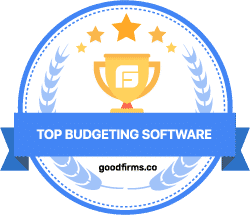If you have several different loans or other types of debt, you know they can take a lot out of your monthly budget. The interest rates on debt can be punishing and will continue to take money away from you until you pay off your debt.
This might seem difficult, but it can be done if you use the right monthly budget planning software with some innovative strategies. Two of the most popular ways people pay down their debts are called the “snowball method” and the “avalanche record.”
Each has its benefits and drawbacks. So, we wanted to talk about both and help you decide if either strategy is right for you.
I. What Is the Debt Snowball Method?
The basic idea behind the debt snowball is that you focus on paying off your smallest debts first, then work your way up to bigger ones. In other words, it works like a snowball, starting small and growing over time.
Here is how the debt snowball works:
1 – List all your debts, with amounts and interest rates
This is where good financial planning software helps. With the right software, you can keep track of all your debts.
So, create a list of your debts.
2 – Order the list from smallest to largest
With the snowball method, you don’t worry about interest rates. You’re just working on your debts from smallest to largest. Once you’ve identified the smallest debt you owe, it becomes your “focused debt.”
3 – Pay the minimums on everything except the focused debt
The snowball strategy is focused. Don’t pay more than you have to for anything but the smallest “focused” debt.
4 – Pay as much as you can into the focused debt each month
You want to pay off the smallest debt as quickly as possible. Spend whatever spare cash you have paying it down. If you’re saving money by only paying the minimums on your other debts, put this all into the focused debt.
5 – Once the focused debt is paid off, target the next smallest debt
After paying off one debt, you should now have a larger amount of money available to you in your monthly budget because those payments are no longer a factor. Move on using that money to pay off the next-smallest debt on the list.
6 – Rinse and repeat
Continue this strategy. Pay as much as possible into the smallest remaining debt while only paying the minimums on everything else. With each small debt that’s paid off, you’ll have more money available to put towards your big debts.
Eventually, you can pay off all your debts this way!
II. What Are the Advantages and Disadvantages of Debt Snowballing?
The best thing about the snowball method is that you see real progress quickly since you’re focusing on the smallest debts first. This helps give you and your family the motivation to keep the snowball rolling. As a bonus, this motivation will make it easier for you to avoid making costly impulse buys or otherwise wasting money that could be put towards your debt.
The downside to the snowball method is that it’s inefficient. Your larger debts – such as car payments or a mortgage – are likely to carry higher interest rates. Saving them for the end means that you could end up paying more money in the long run because you’re paying more interest on those loans.
However, if cost-efficiency is what you’re looking for, you might be interested in the debt avalanche method instead.
III. What Is the Debt Avalanche Method?
The debt avalanche works similarly to the debt snowball, but with one key difference; you first focus on the debts with the highest interest rate.
So, the basic process is the same as above:
- Make a list of your debts, including interest
- Order the debts from highest interest to lowest interest
- Focus on paying off the highest-interest loan while only paying the minimums on everything else
- Once the first high-interest debt is paid off, move on to the next highest interest rate
- Repeat until debt-free
Again, this process can be made much easier by creating a budget with a personal money planner management tool. You’ll be able to see all your budget items and set a solid estimate for how much money you can pay towards your debt each month.
IV. What Are the Advantages and Disadvantages of a Debt Avalanche?
The significant benefit to the debt avalanche method is that – in most cases – it’s going to be the single most efficient way to pay down your debts. By paying off debts with high interest rates first, you’ll see significant increases in the amount of money in your monthly budget.
This will also minimize the amount of money you pay on interest in the long term. You’ll save money using the avalanche method.
However, the avalanche method lacks the sense of momentum that snowballing gives you. Since high-interest loans are often some of the biggest, you could be looking at months or years of work before seeing any of your debts paid off. This can be mentally exhausting.
You need willpower and dedication to pull off the avalanche method.
V. Why You Should Focus on Becoming Debt-Free
If your monthly budget is stable, you might wonder why it’s worth the effort of focusing on your debt. The truth is you will almost certainly be happier without a lot of debt. Being debt-free brings a lot of benefits.
For example:
- You won’t have to stress about paying so many bills
- More of your monthly income will be available for you to spend on the things you want
- Putting money away in an emergency account becomes easier so that if a disaster strikes, you’ll have a safety net
- You’ll be able to save money, allowing you to afford big-ticket items such as a house or paying for your child’s schooling
- Luxury expenses, such as going on vacation, become far easier to afford when you aren’t saddled with debt
- Unexpected lifestyle changes, such as losing a job or gaining a child, won’t be as disruptive
In our experience, once a person experiences life debt-free, they try hard not to go into debt again. There are so many advantages to having a debt-free life.
That’s one reason we created CalendarBudget – one of the best money management applications available. It’s easy to use while having robust analysis and predictive tools like businesses use to manage their finances.
Best of all, you can try it out for free! Click here for a free trial.








Leave A Comment